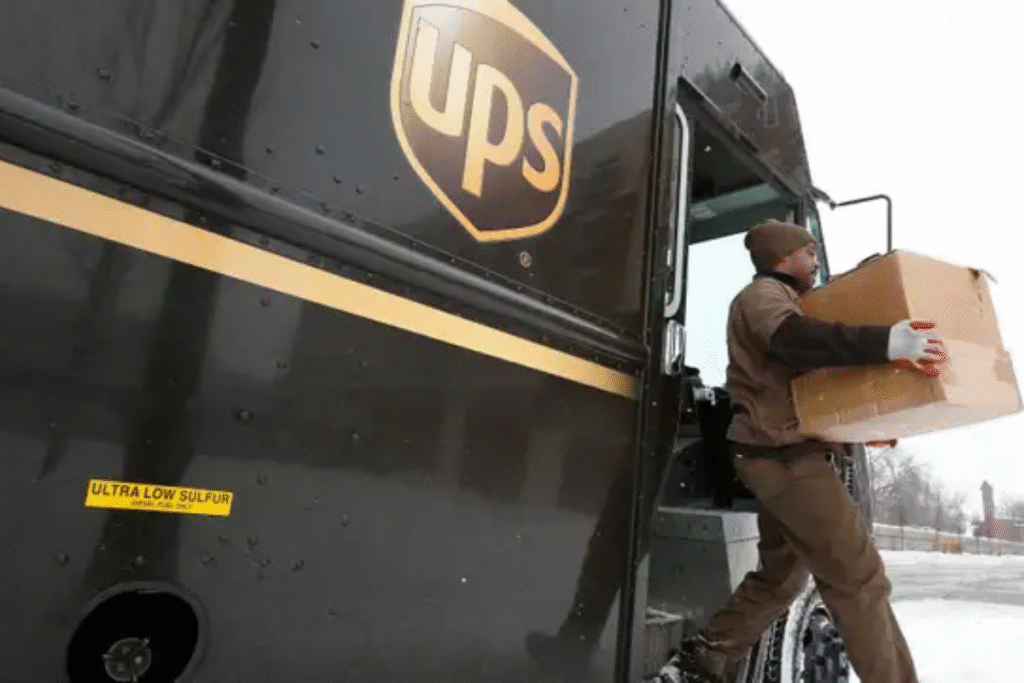United Parcel Service (UPS), the world’s largest package delivery company, has announced plans to cut 20,000 jobs in 2025-a move that sent shockwaves through the shipping and logistics industry. Affecting about 4% of its global workforce, these UPS layoffs have sparked concern among employees and industry observers alike. This article examines the reasons behind the layoffs, their impact on UPS and its workforce, and what they signal for the future of shipping, especially as competition from Amazon intensifies.
Details of the UPS Layoffs
UPS confirmed it will eliminate approximately 20,000 positions in 2025, following a previous round of 12,000 layoffs in 2024. The cuts are part of a sweeping restructuring plan and will coincide with the closure of 73 facilities across the United States by June 2025.. These changes impact a range of roles, including operational positions in package sorting and delivery, as well as some administrative and support functions78.
According to UPS’s first-quarter 2025 earnings report, the company’s total revenue declined slightly to $21.5 billion, down from $21.7 billion the previous year. The layoffs and facility closures are expected to save UPS $3.5 billion in 2025 alone.

Reasons for the Layoffs
Several key factors have driven UPS to make these difficult decisions:
- Economic Slowdown & Tariffs: UPS cited “new or increased tariffs” and global economic uncertainty as primary reasons for the layoffs. President Trump’s tariffs on Chinese imports have led to reduced shipping volumes, especially from small and medium-sized businesses.
- Declining Amazon Business: UPS has accelerated its plan to halve its business with Amazon, its largest client, by mid-2026. Amazon shipments accounted for 11.8% of UPS revenue in 2024, but the volume declined by 16% in the latest quarter as UPS intentionally scaled back this segment, citing it as less profitable.
- Automation & Technology: UPS is investing heavily in automation, with up to 400 facilities expected to become partially or fully automated. Tasks like package sorting and labeling are increasingly handled by machines, reducing reliance on manual labor.
- Cost-Cutting & Efficiency Initiatives: The layoffs are part of a broader “Network Reimagined and Efficiency” plan, aimed at consolidating operations, closing underused facilities, and boosting profit margins.
Impact on UPS and Its Workforce
The UPS layoffs will have significant repercussions for both the company and its employees:
- Financial Impact: UPS expects $3.5 billion in cost savings from the layoffs and facility closures. Despite surpassing profit expectations in the first quarter of 2025, the company withdrew its full-year guidance, citing ongoing macroeconomic uncertainty.
- Employee Morale: The cuts have raised concerns among the 490,000-strong workforce, many of whom are represented by the Teamsters union. While the union has signaled it won’t oppose management layoffs, it has vowed to resist any breach of contract or cuts to unionized, frontline jobs.
- Operational Adjustments: UPS aims to emerge “stronger and more agile,” according to CEO Carol Tomé, by focusing on more profitable segments and leveraging technology to streamline operations.
Competition from Amazon
A major driver of the UPS layoffs is the changing relationship with Amazon. Once a cornerstone client, Amazon’s in-house logistics network has rapidly expanded, reducing its reliance on third-party carriers like UPS. In 2024, Amazon accounted for nearly 12% of UPS’s revenue, but this business has become less attractive due to slim profit margins and increased competition.
Amazon’s decision to build its own delivery infrastructure has forced UPS to reevaluate its strategy. The “glide down” initiative to halve Amazon shipments by 2026 reflects a broader industry trend: traditional shippers must adapt as e-commerce giants internalize logistics and drive down prices].
Industry Trends and the Future of Shipping
The UPS layoffs are part of a larger transformation within the shipping and logistics sector:
- E-Commerce Evolution: The pandemic-fueled surge in online shopping has moderated, leading to lower package volumes and more intense competition for remaining business.
- Demand for Speed: Consumers increasingly expect faster delivery times, pushing companies to invest in automation, route optimization, and digital tracking.
- Automation & Workforce Changes: As automation becomes more prevalent, roles in warehousing, sorting, and delivery are being redefined or eliminated.
- Global Trade Uncertainty: Ongoing tariff disputes and economic headwinds are prompting shipping companies to consolidate and streamline operations.
- Industry Restructuring: UPS’s competitors, including FedEx and DHL, are also restructuring their networks to remain competitive in a rapidly changing landscape.
Conclusion
The 2025 UPS layoffs mark a pivotal moment for the shipping and logistics industry. Driven by economic uncertainty, automation, and the shifting dynamics of e-commerce-especially the rise of Amazon’s logistics network-UPS is making bold moves to cut costs and refocus its business. While these changes may strengthen UPS’s position in the long run, they come at a significant human cost and reflect the broader challenges facing the sector. As the industry continues to evolve, companies like UPS must balance efficiency and innovation with the needs of their workforce and customers, navigating a future where adaptability is key.
See also https://scoopusa24.com/amazon-tariffs-impact-analysis/